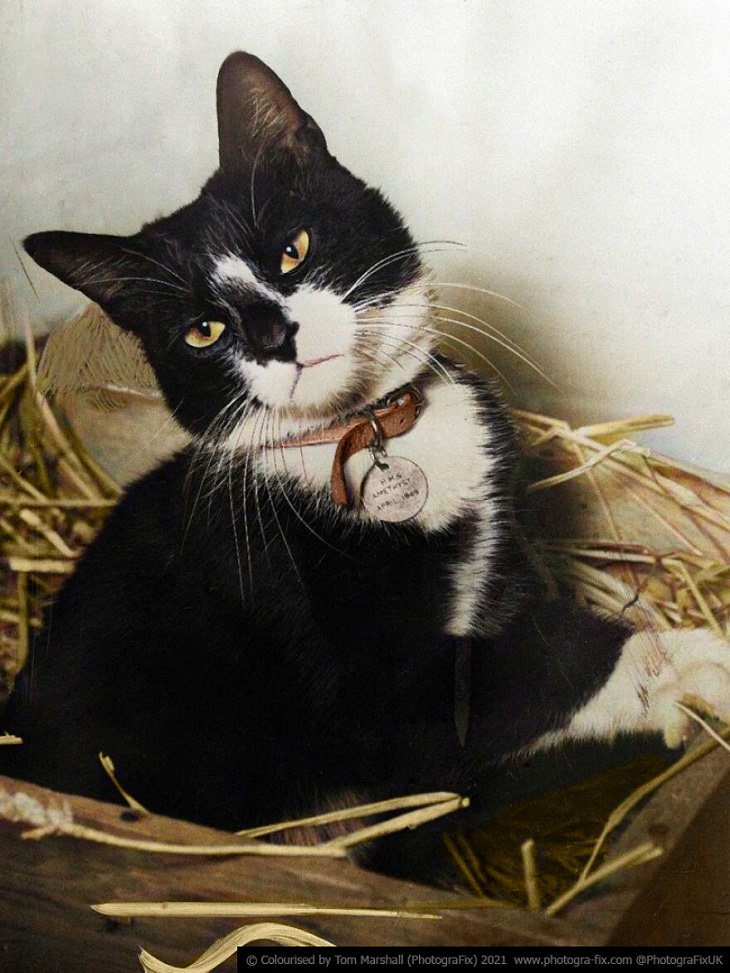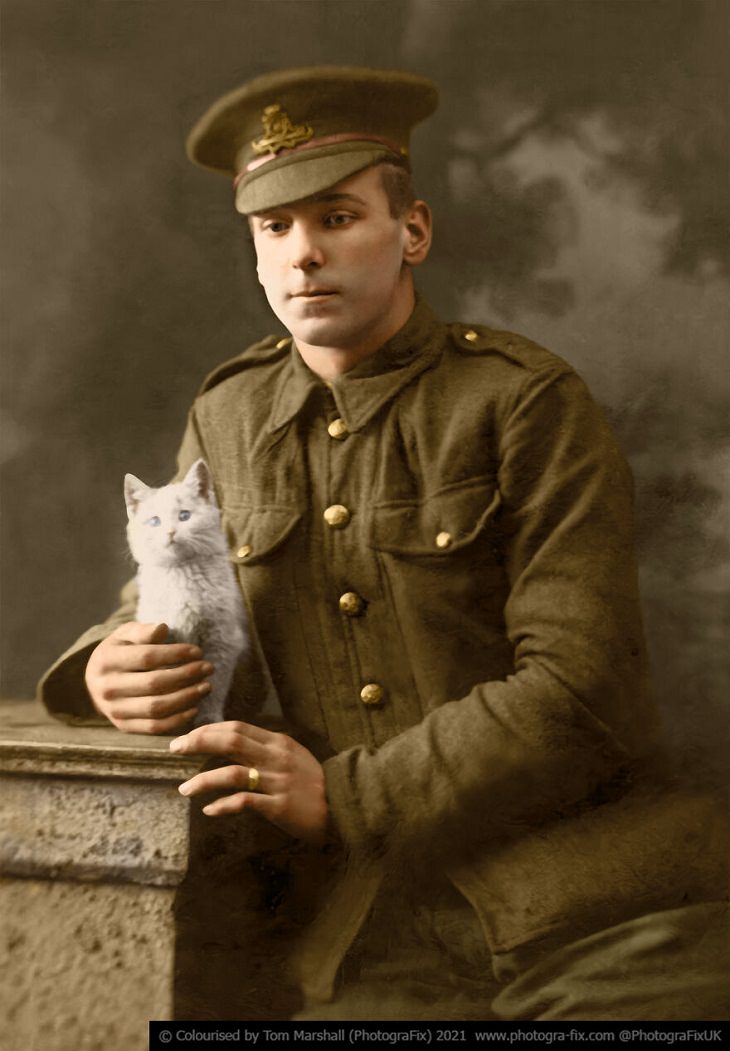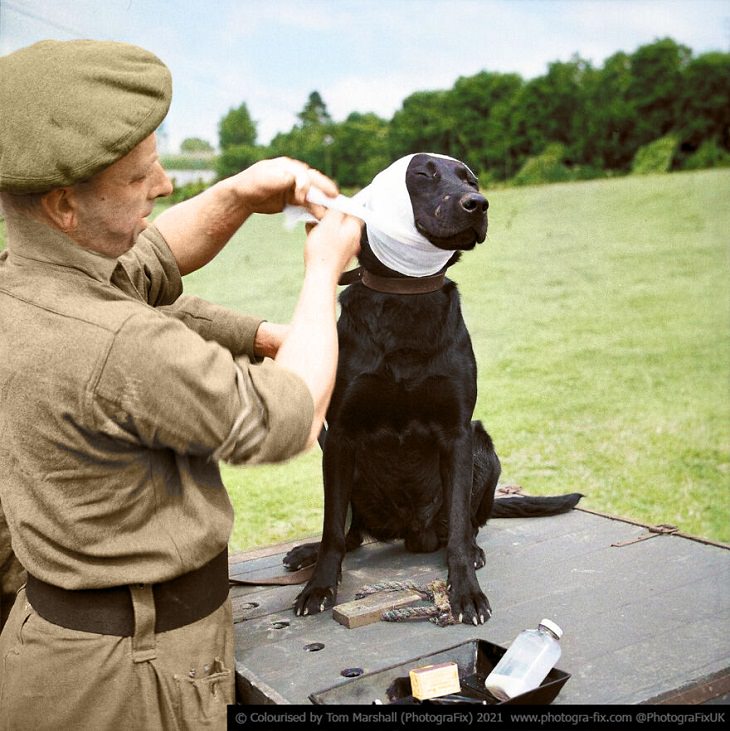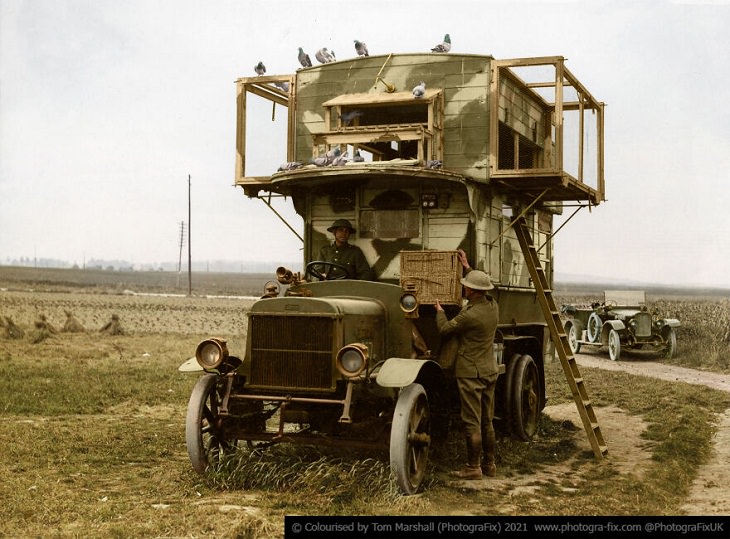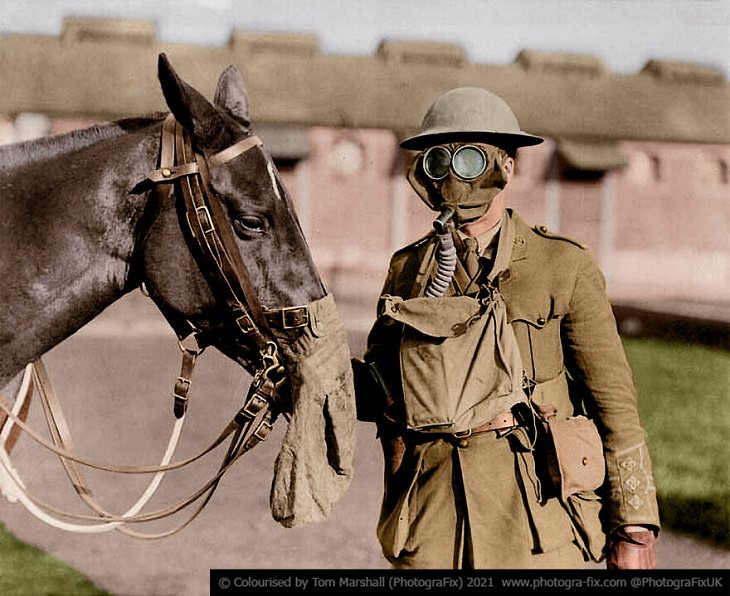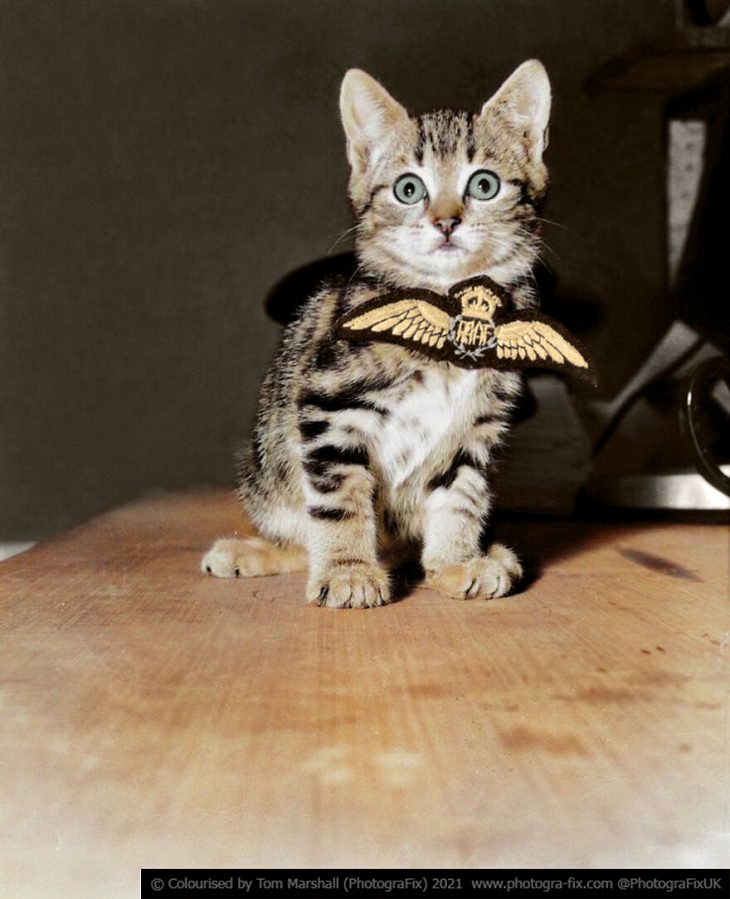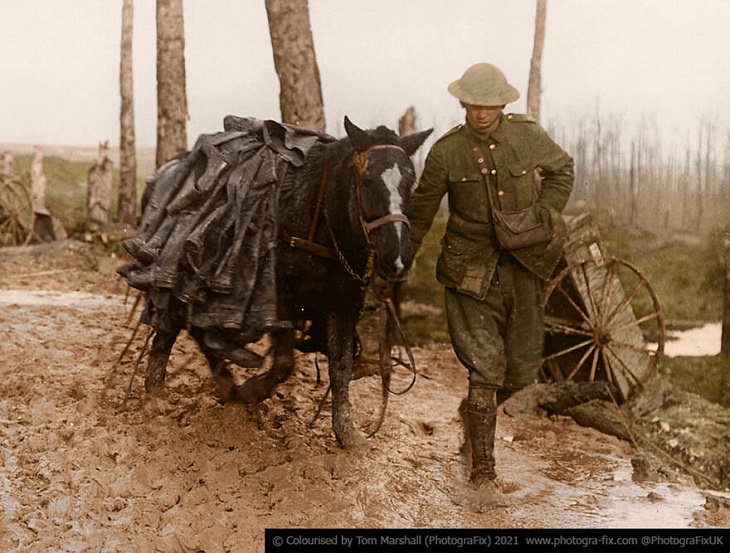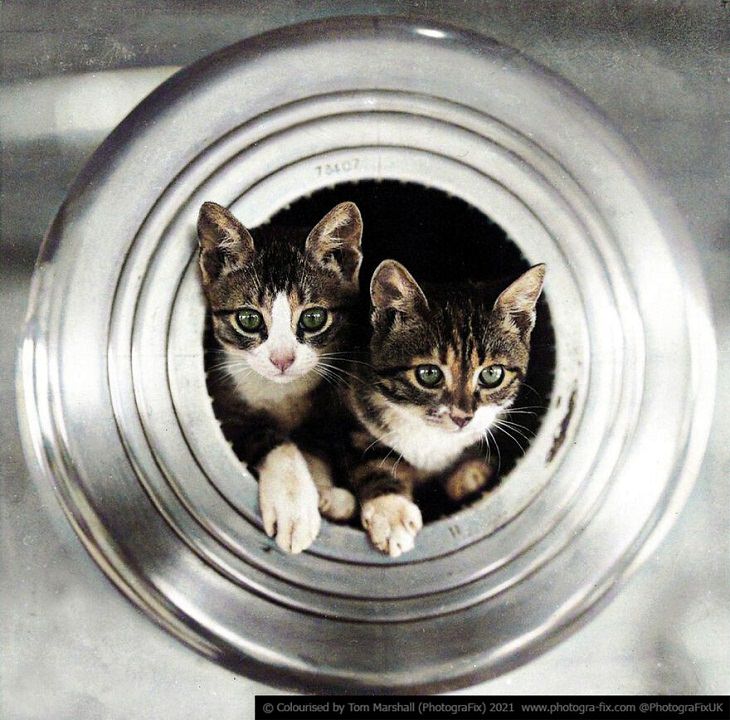It’s always fascinating to learn the stories of animals in wartime. Millions of animals served in the First and Second World Wars. Horses, donkeys, mules, and camels were usually used to carry food, water, ammunition, and medical supplies to those at the front. Dogs and pigeons carried messages and canaries were used to detect poisonous gas.
Cats were also often carried on board navy ships or hunted rats in the trenches. Then, there were several other animals, including cats, dogs, birds, monkeys, bears, and lions that served as mascots and helped boost the morale amid war.
Related: The Stories of These Great Animal War Heroes Is Inspiring
Today, we will remember a few such brave animals that served in both World Wars through some glorious vintage photos. These images were originally processed in black-and-white but have recently been transformed into color by Tom Marshall, a professional photo colorizer. He recolored the pictures to honor the many animals who sacrificed their lives in human wars.
From cats on ships and mine-detecting dogs to warhorses and carrier pigeons, these amazing animals deserve to be remembered forever.
#1 Simon, the ship cat
Simon served on the Royal Navy sloop-of-war HMS Amethyst. The Hong Kong-born cat was a stray who got smuggled on board the ship. When the Amethyst came under fire from the Chinese forces on the Yangtze River in 1949 and was left stranded for 101 agonizing days, Simon played a key role in lifting people's spirits while also keeping the rat population in check. His brave efforts earned him the PDSA Dickin Medal - the highest honor for animal gallantry in wartime.
#2 A First World War soldier and his cat
An unnamed British Royal Artillery soldier with his kitten in 1917. This little cat is likely to have been from a local farm or village and may have served as a mascot for the regiment.
#3 Jasper, the mine-detecting dog
A sergeant of the Royal Army Veterinary Corps bandages the wounded ear of Jasper, a mine-detecting dog at Bayeux in Normandy, 5 July 1944. Dogs were first used for this purpose during the Second World War. Soldiers who served in the war have acknowledged that dogs were exceptionally proficient at using their acute sense of smell to successfully detect landmines.
#4 Venus, the bulldog mascot
The handsome dog was the mascot of the destroyer HMS Vansittart, 1941.
#5 Messenger pigeons
This B-type bus was converted into a pigeon loft, allowing the birds to send messages from the front line back to headquarters. It's estimated that over 100,000 carrier pigeons were used as messengers throughout WW1. Amazingly, these birds had an incredible success rate of 95%! Records show that, for every 20 pigeons released with vital information, nineteen would be successful in delivering the message.
#6 Royal navy mascot
Buster, the mascot of the HMS Stork, onboard, Liverpool, 18th of May, 1941. During the Second World War, the vessel went on to destroy four German U-boats.
#7 A warhorse
A Royal Canadian Army Veterinary Corps Captain and horse in 1916. Eight million horses, donkeys, and mules are estimated to have died in World War I. About three-quarters of them perished due to the extreme conditions they worked in.
#8 Aircrew
This young cat named Aircrew was adopted by the Royal Australian Air Force Flying Training School, in Cressy, Victoria, Australia.
#9 A horse and soldier transporting boots
This brave horse is loaded down with rubber trench waders while the path is so deep in wet mud that we can't even see the animal's hooves.
Apart from performing cavalry roles, horses were also crucial for moving supplies, equipment, guns. and ammunition during the First World War due to their dependability and ability to travel over various terrains.
#10 Ship kittens
Cats have been used on ships during wars throughout history, primarily to kill rodents who were notorious for causing damage to ropes, woodwork, and food while also spreading disease.
These two kittens lived aboard HMS Hawkins, a heavy cruiser built by the Royal Navy during the First World War. Here, they can be seen inside the barrel of a 7.5-inch gun.
In 1975, the Royal Navy banned cats and other pet animals from all ships on the ocean for health and safety reasons.
Check out more works of the artist on his Instagram page.
Share this post with your loved ones...

